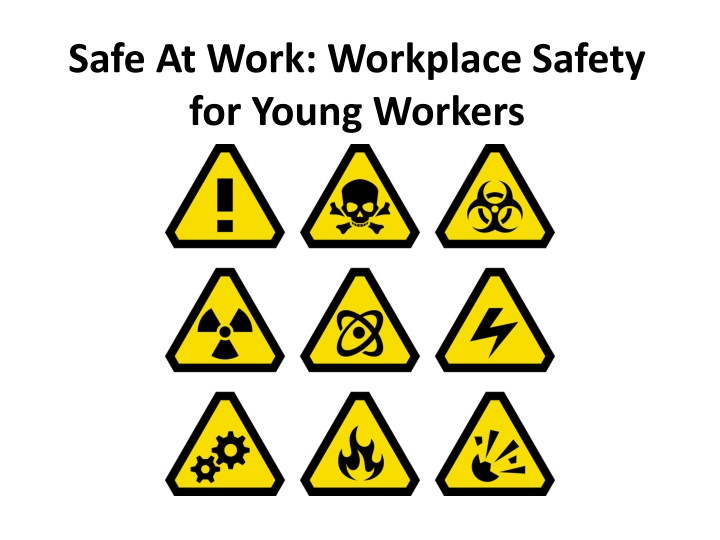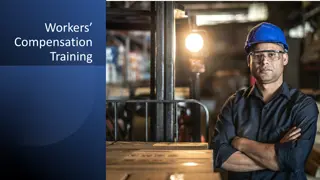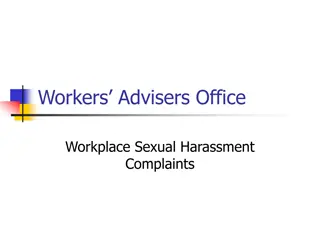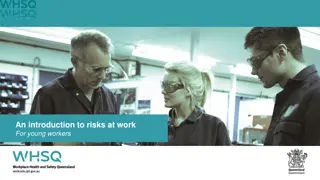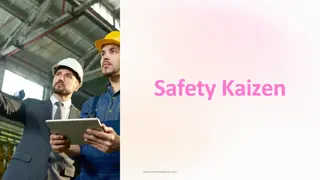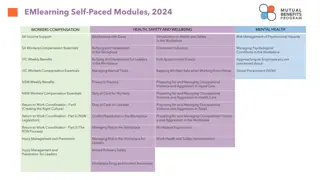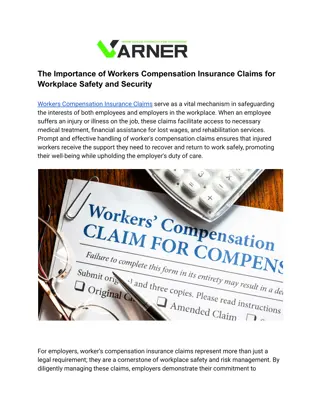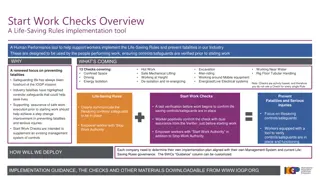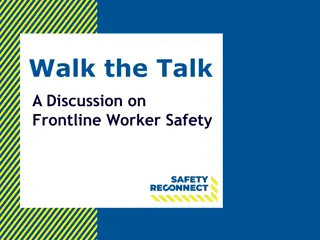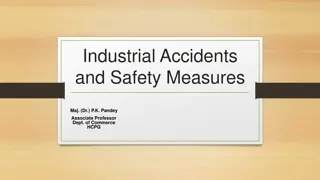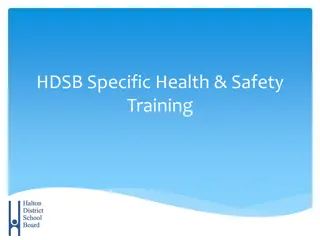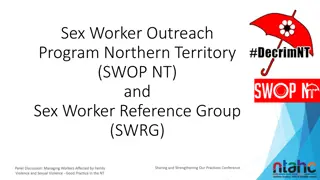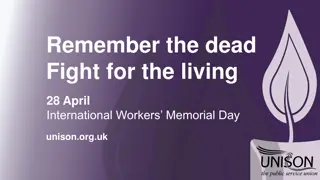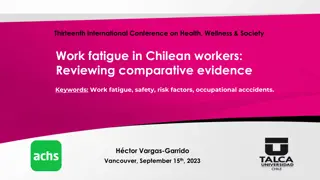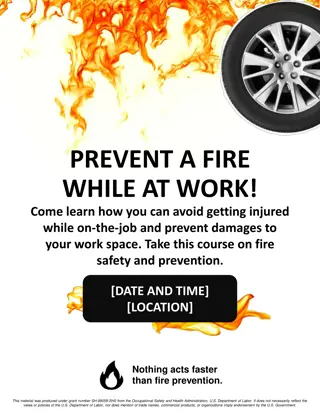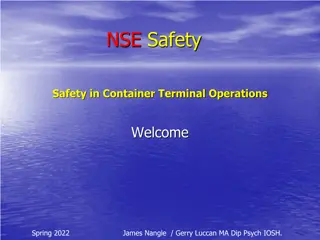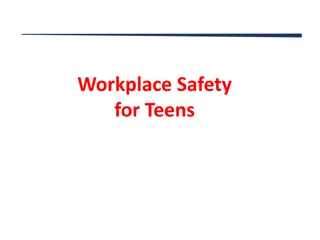Safe At Work: Workplace Safety for Young Workers
Workplace safety is crucial, especially for young workers who may lack experience. This resource, "Safe at Work: Workplace Safety for Young Workers," provides valuable insights and practical tips to ensure a safe work environment. From identifying potential hazards to implementing safety protocols, this guide equips young workers with the knowledge and skills they need to protect themselves on the job. By promoting a culture of safety and awareness, employers and employees can work together to prevent accidents and injuries in the workplace.
Download Presentation

Please find below an Image/Link to download the presentation.
The content on the website is provided AS IS for your information and personal use only. It may not be sold, licensed, or shared on other websites without obtaining consent from the author.If you encounter any issues during the download, it is possible that the publisher has removed the file from their server.
You are allowed to download the files provided on this website for personal or commercial use, subject to the condition that they are used lawfully. All files are the property of their respective owners.
The content on the website is provided AS IS for your information and personal use only. It may not be sold, licensed, or shared on other websites without obtaining consent from the author.
E N D
Presentation Transcript
Safe At Work: Workplace Safety for Young Workers
Lesson Overview blue Young worker injuries and illnesses Workplace hazards Including chemical, biological, safety, and other health hazards Reducing young worker injuries and illnesses Young worker rights and responsibilities An overview of Young Worker Labor Laws 2
Occupational Injuries and Deaths Among Young Workers* Younger workers (workers aged 15-24 years): Represent 14% of the U.S. labor force Overrepresented in dangerous jobs: o construction, transportation, agriculture, and mining Workers under 25 years old were twice as likely to end up in the emergency room when compared to those aged 25 and older *Centers for Disease Control and Prevention. Morbidity and Mortality Weekly Report. April 23, 2010, Vol. 59, No. 15. 4
Teen Worker Injury Statistics Approximately 1.6 million teens (aged 15 17) in the United States work. About 50% of 10th graders and 75% of 12th graders have jobs. Many youths are injured on the job. On average, each year 59,800 workers younger than 18 are sent to the ER for job-related injuries, but actual injury statistics are much higher. 37 workers younger than 18 die on the job. Young workers are twice as likely to be injured than adult workers. NIOSH 2010 www.cdc.gov/niosh/topics/youth/chartpackage.html 5 www.cdc.gov/mmwr/preview/mmwrhtml/mm5915a2.htm
What is a Job Hazard? A job hazard is anything at work that can hurt you, either physically or mentally. 6
Hazard Categories Biological Other Health Hazards Hazard Physical Chemical 7
Job Hazards,slide 1 A job hazard is anything at work that can hurt you either physically or mentally. Safety hazards can cause immediate injuries Knives, hot grease Chemical hazards are gases, vapors, liquids, or dusts that can harm your body Cleaning products, pesticides 8
Job Hazards, slide 2 Biological hazards are living things that can cause sickness or disease, such as influenza, West Nile Virus, hepatitis, and tuberculosis. Bacteria, viruses Other health hazards are other harmful things that can injure you or make you sick. Some are not obvious because they may not cause health problems right away. Noise, radiation, repetitive movements, heat, cold, stress, violence 9
Finding Hazards: Main Points All workplaces have hazards. A job hazard is anything at work that can hurt you, physically or mentally. Some job hazards are obvious, but others are not. Some hazards can hurt you now, others can hurt you in the future. To be safe on the job, you must identify different types of hazards. People have a right to know about chemicals and other hazardous substances in their workplaces! When using a new chemical, read labels and check the SDS (Safety Data Sheet). 12
Hazard Prevention Strategies Remove the hazard or build a barrier Improve work policies and procedures Use protective clothing and equipment 13
Your Right to a Safe and Healthful Workplace The creation of the Occupational Health and Safety Administration (OSHA) provided workers the right to a safe and healthful workplace. Section 5(a)(1) of the OSHA Act states: Each employer shall furnish to each of his employees employment and a place of employment which are free from recognized hazards that are causing or are likely to cause death or serious physical harm to his employees." https://www.osha.gov/ or call: 1-800-321-OSHA 14
What Rights Do All Employees Have Under OSHA? You have the right to: A safe and healthful workplace Know about hazardous chemicals Information about injuries and illnesses in your workplace Complain or request hazard correction from employer Training Hazard exposure and medical records File a complaint with OSHA Participate in an OSHA inspection Be free from retaliation for exercising safety and health rights 15
Resources Occupational Safety and Health Administration (OSHA) https://www.osha.gov/youngworkers/index.html National Institute for Occupational Safety and Health (NIOSH) http://www.cdc.gov/niosh/topics/youth/ Youngworkers.org https://youngworkers.org/ The California Resource Network for Young Workers Health and Safety and home of the National Young Worker Safety Resource Center. United States Department of Labor, Wage and Hour Division (WHD) Youth Rules! http://youthrules.dol.gov/ 16
